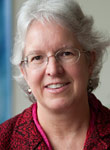Sesquicentennial class of incoming students increases Cornell diversity
By Nancy Doolittle

Cornell's entering freshman class - the class that will graduate in 2015, the university's sesquicentennial - continues to grow in diversity over its predecessors.
"Cornell's Class of 2015 will join the university at a time when it begins to celebrate its heritage of 150 years shaped by Ezra Cornell's revolutionary vision to 'found an institution where any person can find instruction in any study,'" said Barbara Knuth, Cornell vice provost and dean of the Graduate School. "That heritage is enriched once again this year, as the university continues to attract students from all over the world and from diverse racial and socio-economic backgrounds."
The number of international students, for example, has increased to 349, a 24 percent hike over last year's freshman class; international students represent 10 percent of the Class of 2015 and come from 45 countries.
And while 41 percent of the new class identify themselves as Caucasian (down from nearly 46 percent in 2010), more than 36 percent of the class identify themselves as students of color this year. For example:
Of the students from the United States, almost 30 percent are from New York state, followed by 21 percent from the Mid-Atlantic region, 12 percent from Western states, 11 percent from New England and 8 percent from the Midwest. Students hail from 48 states as well as Washington, D.C., and Puerto Rico.
As for socio-economic diversity, just over half of all incoming freshmen qualified for need-based financial aid, and the university awarded grants to 49 percent of the class, averaging $33,099 -- up $2,417 from the average in 2010. A large majority -- 66 percent -- attended public high schools.
Cornell continues to be increasingly attractive to prospective students. "The number of applicants has increased, while the number admitted has decreased, reflecting the high academic quality of those entering the university," said Knuth. Further, of those admitted, a greater number accepted the admission offer and plan to attend Cornell: 3,356, compared with 3,229 in 2010. Cornell's yield rate (the proportion of students accepting the offer of admission) increased nearly 3 percentage points compared with 2010.
The percent of men vs. women in the entering class remains split nearly evenly, as was also true in 2010.
For more information on previous Cornell classes, visit http://dpb.cornell.edu/F_Undergraduate_Admissions.htm.
Media Contact
Get Cornell news delivered right to your inbox.
Subscribe